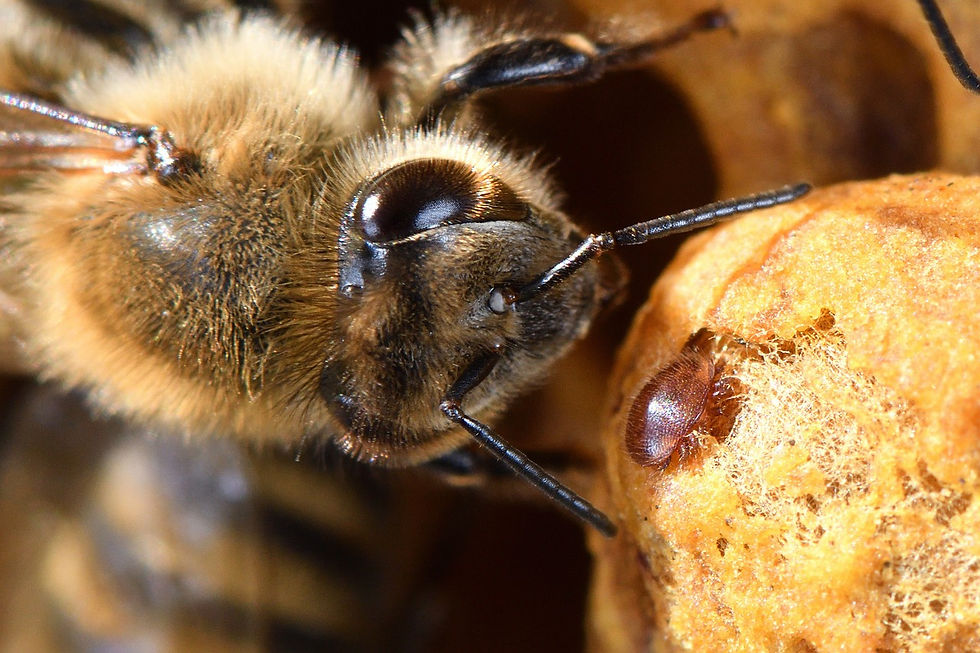Quarantine Area to support red dwarf honey bee eradication response
- bicwaorg
- Sep 5, 2023
- 2 min read
DPIRD Media Statement 5 September 2023

Map
A Quarantine Area has been declared for the Burrup Peninsula to help stop the spread of the exotic pest, red dwarf honey bee.
A Quarantine Area has been declared for the Burrup Peninsula in the Pilbara to support a biosecurity response to eradicate the exotic pest, red dwarf honey bee.
There have been confirmed detections of the pest at 10 sites on the peninsula by the Department of Primary Industries and Regional Development (DPIRD) and the Federal Department of Agriculture, Forestry and Food (DAFF).
Bee keepers with hives, equipment or those who have collected swarms on the peninsula are not permitted to move them outside the Quarantine Area to prevent the pest from spreading.
Affected bee keepers are asked to contact DPIRD’s Pest and Disease Information Service (PaDIS) to advise of hives in the area.
Workers, residents, businesses and visitors to the Quarantine Area are required to report observations of unusual bees to the PaDIS hotline or via the department’s MyPestGuideReporter app to support surveillance.
Red dwarf honey bee, which is a vector for numerous exotic bee pests, is native to South Asia and parts of South East Asia and has spread to the Middle East and Africa.
To date, the surveillance program has identified an exotic brood mite (Euvarroa sinhai) associated with red dwarf honey bee – not to be confused with the varroa mite (Varroa destructor), which is the focus of a major eradication effort in New South Wales.
Chief Plant Biosecurity Officer Sonya Broughton said the Quarantine Area would support an efficient and effective biosecurity response and called on all bee keepers and the community for support.
“DPIRD and DAFF have been collaborating for several weeks to eradicate red dwarf honey bee and its mites, which pose a threat to the environment, the honey industry and the agricultural sector,” Dr Broughton said.
“Bees play an important pollination role so it is important for commercial and recreational bee keepers to adhere to the Quarantine Area requirements.
“The local community and visitors to the area play an important role in the first line of biosecurity defence by reporting sightings of any unusual bees.
“It is crucial to report observations of unusual bees as quickly as possible to aid the response effort.”
Red dwarf honey bees are smaller than European honey bees, just seven to 10 millimetres in length, with a red-brown abdomen and black and white bands.
The social pest lives in small colonies, characterised by an exposed single vertical comb, which can be built in native vegetation or on structures.
Reports of unusual bees or colonies on the Burrup Peninsula should be made immediately to DPIRD’s Pest and Disease Information Service on 9368 3080, email padis@dpird.wa.gov.au or via the MyPestGuide Reporter app.
For more information about the red dwarf honey bee and the biosecurity response, visit www.agric.wa.gov.au/red-dwarf-honey-bee.
Locals and visitors to the Burrup Peninsula have been asked to report sightings of the pest red dwarf honey bees immediately as part of new Quarantine Area requirements to aid a biosecurity response.

A Quarantine Area has been declared for the Burrup Peninsula to prevent the spread of the exotic pest, red dwarf honey bee, which can form colonies.

Media contacts
Dr Sonya Broughton, Chief Plant Biosecurity Officer
Megan Broad/Jodie Thomson, media liaison +61 (0)8 9368 3937




Comments